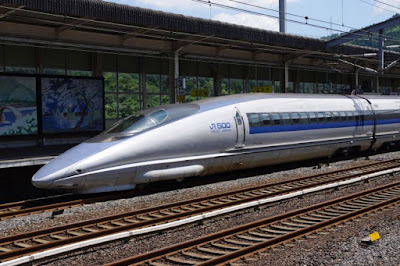As part of the In2Science Programme (now virtual due to Covid-19), I've had the opportunity to attend many lectures and workshops hosted by researchers and professors from a variety of different institutions. I decided to apply to this programme as I've always known I wanted to pursue a career in science but up until now, I've never known what. I hoped by participating in this new experience, I would be able to understand what it really means to be a scientific researcher. This week, I attended a lecture by Majid Taghavi (a senior research associate at the University of Bristol) on 'Nature Inspiration for Creative Engineering'. The course aims to give students an insight on how the natural world can be a source of inspiration to create new and innovative designs and technologies for soft robotics.
Included in the lecture were examples of biomorphic (designed to look like something from nature), biomimetic (designs that reproduce aspects of a biological system) and bioinspiration (a design that captures the essential idea of a biological system). To reduce noise pollution on the Japanese Shinkansen train, for example, engineers used a biomorphic and biomimetic design. They took inspiration from the Kingfisher: it's a creature that has evolved to move between water and air with little splash (and therefore little noise). The Shinkansen train now has a long beak- shaped nose that has not only reduced the amount of noise, but the electricity used has been reduced by 15% and the train now travels 10% faster.
My Research Task.
One aspect of the In2Science programme is to take part in research and our task was to research a biological mechanism that linked soft materials to stiff materials and find how it has inspired human design. For example, tendons link muscles (soft material) to bone (stiff material) in our bodies and without it, we wouldn't be able to move our bodies in our usual dexterous and coordinated manner.
I chose to research Ivy. As a native to Europe and Western Asia, it's one of the most well known climbing plants and grows on many of our buildings and fences. Competition for sunlight has driven the Ivy’s ability to climb vertical surfaces and break through forest canopies - it's grip is so strong that, when ripped off, Ivy can remove part of the underlying material with it.
Without this adaptation, the plant simply wouldn’t receive enough sunlight trapped beneath the leaves of taller trees. Sun energy is essential for photosynthesis which is needed to produce sugars to allow the plant to grow and live.
The Ivy has overcome this by growing roots along the underside of its stem and using it to cling to bigger plants. When the roots connect with a surface, they cling onto the small indentations covering it. This is made secure by the roots secreting a glue-like substance to stick to the material. The roots then change shape, scrunching up into a spiral around the indentations. Now the Ivy is securely attached and has better chances of acquiring adequate sunlight.
The Ivy's tenacious ability to climb inspired researchers from South Korea. Studying Boston Ivy disks, they managed to create pressure mediated adhesive film patches. In their findings first published in November 2019, the team used microgels coated in nanoparticles that were arranged on a flexible stencil. By adding pressure to the film, the patches were activated and can be used in a range of technologies. The process by which the Ivy clings to materials has been long understood, yet it's only now that it's starting to generate new ideas for technology.
What I've Learned.
 |
| Dr Majid Taghavi - Senior Research Associate at the University of Bristol. |
As a student of physics and biology, I found listening to Taghavi and delving deeper into the subject fascinating. My thoughts on biophysics were originally just limited to its medical applications but, now having been exposed to this side of engineering, I may have found a new interest. Taghavi's work is: "delivering novel, strong, quick and efficient artificial muscle technologies which convert electrical energy into mechanical energy." These muscles are to be used to create new medical implants, wearable devices and help develop robotic surgery.
Taking inspiration from the world around us has enabled us to access systems and designs that have been perfected over millions of years of evolution. And with 8.7 million species sharing the same habitats, it would be foolish of us to ignore the designs and ideas available to us.




Comments
Post a Comment